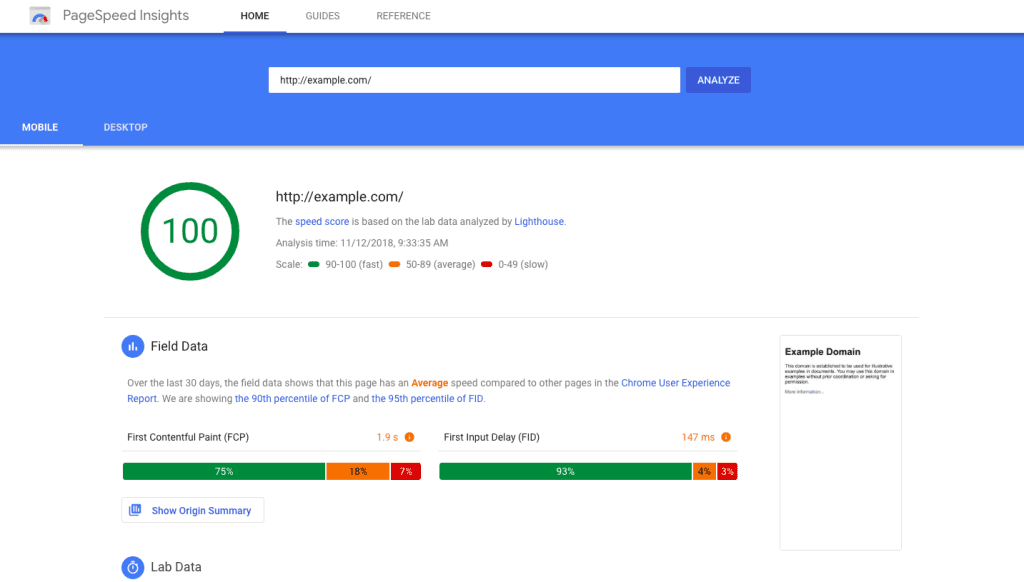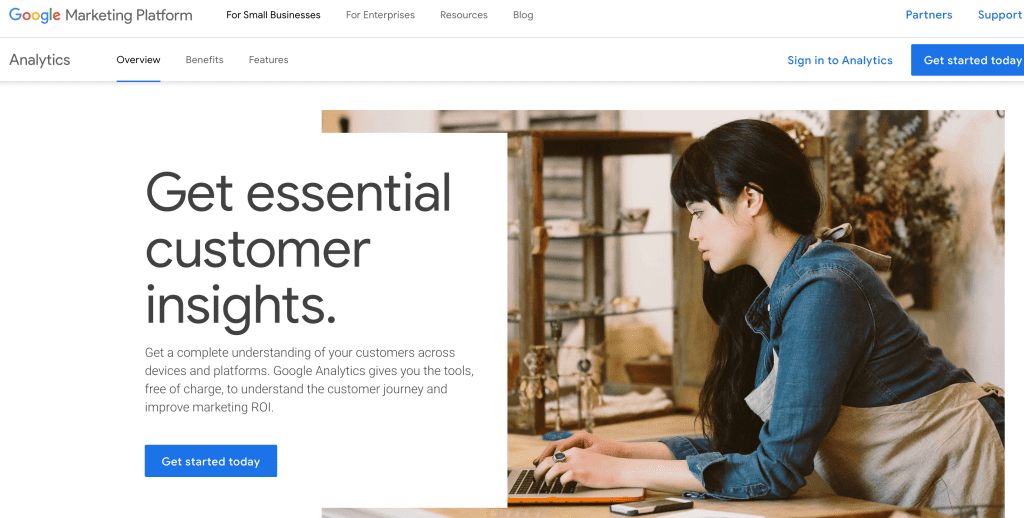Key Takeaways
- Embrace Linguistic Diversity: Tailor your content strategy to resonate with the bilingual nature of the Philippines, incorporating both English and Filipino to maximize audience engagement.
- Prioritize Local SEO: Leverage Google My Business, local directories, and community engagement to establish a strong local presence. Learn from successful local businesses like Mang Inasal and Goldilocks.
- Stay Ahead of Emerging Trends: Anticipate the impact of AI, voice search, and evolving search engine algorithms. Future-proof your SEO strategy by adopting innovative approaches exemplified by industry leaders like Shopee.
In the digital realm where competition is fierce and online visibility is paramount, mastering the art of Search Engine Optimization (SEO) is not just a strategy; it’s a necessity.
For businesses operating in the vibrant and dynamic landscape of the Philippines, understanding the nuances of SEO tailored to the local market is a game-changer.
Welcome to our comprehensive guide — your roadmap to conquering the digital frontier in the Pearl of the Orient Seas.

Embarking on the SEO Journey in the Philippines
Nestled within the Southeast Asian archipelago, the Philippines boasts a burgeoning digital ecosystem, fueled by a tech-savvy population and a growing online market.
As businesses strive to connect with Filipino consumers, the significance of a well-crafted SEO strategy cannot be overstated.
This complete guide is your passport to navigating the intricacies of SEO in the Philippines, offering insights, tactics, and actionable steps to elevate your online presence.

Why SEO Matters in the Philippine Context
In a country where social media is a way of life and online searches dictate consumer decisions, harnessing the power of SEO is not merely an option — it’s a strategic imperative.
From the bustling streets of Manila to the serene beaches of Palawan, internet usage is on the rise, creating a digital marketplace ripe with opportunities.
Whether you’re a local business aiming to capture a niche market or a global entity eyeing expansion, understanding how to optimize for the Philippines is the key to unlocking unparalleled success.
Navigating the Local Digital Landscape
Before delving into the intricacies of SEO tactics, it’s crucial to comprehend the unique characteristics of the Philippine digital landscape.
From the prevalence of mobile users to the dominance of specific search engines, this guide will unravel the mysteries that shape online behaviour in this diverse and culturally rich nation.
By tailoring your SEO efforts to match local preferences and idiosyncrasies, you pave the way for a more targeted and effective online strategy.
What Sets This Guide Apart
In a sea of information, what distinguishes this guide is its commitment to providing not just theoretical concepts but actionable insights grounded in the Philippine context.
This isn’t just a guide; it’s your companion on the journey to digital prominence in the Philippines.
Empowering Your SEO Journey
Whether you’re a startup seeking to establish a digital footprint or an established enterprise aiming for greater market share, this guide is designed to empower your SEO journey.
From optimizing your website for local search to navigating the challenges unique to the Philippine market, each section is crafted with precision to provide you with the knowledge and tools needed to succeed.
Buckle up as we embark on a deep dive into the world of SEO in the Philippines — where every click, keyword, and link has the potential to shape your digital destiny. Let the adventure begin.
But, before we venture further, we like to share who we are and what we do.
About AppLabx
From developing a solid marketing plan to creating compelling content, optimizing for search engines, leveraging social media, and utilizing paid advertising, AppLabx offers a comprehensive suite of digital marketing services designed to drive growth and profitability for your business.
AppLabx is well known for helping companies and startups in the Philippines use SEO to drive web traffic to their websites and web apps.
At AppLabx, we understand that no two businesses are alike. That’s why we take a personalized approach to every project, working closely with our clients to understand their unique needs and goals, and developing customized strategies to help them achieve success.
If you need a digital consultation, then send in an inquiry here.
How to do SEO in the Philippines: A Complete Guide
- Understanding the Philippine Market
- Key SEO Factors for the Philippines
- On-Page SEO Techniques
- Off-Page SEO Strategies
- Technical SEO Best Practices
- SEO Tools for the Philippines
- Future Trends in Philippine SEO
1. Understanding the Philippine Market

Demographics and Online Behavior in the Philippines
Internet Penetration and Usage
The Philippines, an archipelago of over 7,000 islands, has witnessed a remarkable surge in internet penetration over the past decade.
This surge has significantly impacted online behaviour, making the internet a primary source of information, entertainment, and commerce.
Mobile-First Nation
Filipinos are renowned for being a mobile-first nation.
This implies that any SEO strategy aiming to capture the Filipino market must prioritize mobile optimization.
Responsive design, fast-loading mobile pages, and mobile-friendly content are paramount for success.
Popular Search Engines in the Philippines
Google Dominance
While Google maintains its global dominance, it’s essential to note that in the Philippines, it reigns supreme.
As of January 2023, Google led the search engine market in the Philippines with a 95 per cent share.
Therefore, optimizing for Google’s algorithms is crucial for ensuring visibility in the Philippine digital landscape.
Local Search Engine Preferences
Despite Google’s dominance, there are local search engines that cater to specific needs. For instance, “Googol” (not to be confused with Google) is a search engine designed for Filipinos, emphasizing local content.
While its market share is relatively small, understanding such niche platforms can be advantageous for hyper-localized SEO strategies.
Localized Keyword Research for Targeted Audience
Language Considerations
The linguistic diversity in the Philippines presents a unique challenge and opportunity for SEO. English and Filipino are the official languages, but regional languages are also widely spoken.
For effective keyword targeting, understanding the language preferences of the target audience is crucial. Utilizing a mix of English and Filipino keywords, along with region-specific terms, can enhance the relevance of content.
Jollibee’s Keyword Strategy
Jollibee, a Filipino fast-food giant, exemplifies effective localized keyword targeting. Their online presence incorporates a mix of English and Filipino keywords, aligning with the diverse linguistic landscape of the country.
For instance, using both “burger” and “pam-bansang manok” (national chicken) caters to a broader audience.

Social Media Integration
In the Philippines, social media isn’t just a platform; it’s a way of life. Integrating social media trends and buzzwords into keyword research can boost visibility.
Monitoring and incorporating popular hashtags into content can tap into ongoing conversations and enhance online discoverability.
By comprehending the demographics, online behaviour, and search engine dynamics in the Philippines, businesses can lay the foundation for an SEO strategy that resonates with the nuances of the local market.
2. Key SEO Factors for the Philippines

Mobile Optimization and Responsive Design
Mobile Internet Penetration
Google’s mobile-first indexing, where the search engine predominantly uses the mobile version of a site for indexing and ranking, makes mobile optimization a crucial ranking factor.
Page Speed Matters
In a country where users expect swift access to information, page speed is paramount.
For every second delay in mobile page load, conversions can fall by up to 20%.
Optimizing images, leveraging browser caching, and minimizing server response time is essential for ensuring a seamless mobile user experience.
Lazada’s Mobile-First Approach
Lazada, a prominent e-commerce player in the Philippines, exemplifies the significance of mobile optimization. Their mobile app and website are designed for quick loading, intuitive navigation, and a seamless shopping experience.
Lazada’s commitment to mobile responsiveness contributes to its dominance in the online retail space.

Importance of Local SEO
Google My Business (GMB) Optimization
For businesses targeting a local audience, optimizing their Google My Business profile is non-negotiable. 70% of mobile searchers call a business directly from search results, emphasizing the critical role of GMB.
Including accurate business information, responding to reviews, and regularly updating GMB details enhance local visibility.
Geo-Targeted Keywords
In a country with diverse regions and dialects, incorporating geo-targeted keywords is essential.
For instance, a bakery in Cebu City may benefit from using keywords like “Cebu City’s Best Pastries” to attract local customers. This localized approach aligns with the search behavior of users seeking nearby businesses.
Case in Point: Mang Inasal’s Local SEO Success
Mang Inasal, a popular fast-food chain in the Philippines, has mastered local SEO. By optimizing their GMB profiles for each branch, using region-specific keywords, and engaging with local communities on social media, Mang Inasal ensures high visibility in local searches.

Language Considerations and Content Localization
Bilingual Content Strategy
Given the bilingual nature of the Philippines, a successful SEO strategy involves creating content that resonates with both English and Filipino speakers.
Crafting bilingual content not only widens the audience reach but also aligns with the search preferences of users.
3. On-Page SEO Techniques

Optimizing Meta Tags for Local Relevance
Title Tags and Meta Descriptions
Strategic Keyword Placement: Incorporate relevant keywords in title tags and meta descriptions to enhance visibility.
Example: A local bakery in Manila could use a title tag like “Manila’s Best Artisanal Breads | [Business Name].”
Localized Information: Include location-specific details to cater to the local audience. For instance, specifying the neighborhood or city in the meta description can attract users seeking nearby businesses.
Example: “Discover the Finest Pastries in Makati – [Business Name] offers delectable treats handcrafted for Makati residents.”
Header Tags (H1, H2, H3)
Keyword-Optimized Headings: Structure content with keyword-optimized headings to signal relevance to search engines. Header tags also enhance readability and user experience.
Example: “Explore the Rich Culinary Heritage of Cebu with [Business Name] – Your Go-To Destination for Local Flavors.”
Creating SEO-Friendly and Culturally Relevant Content
Keyword-Rich Content
Natural Keyword Integration: Create content that naturally incorporates keywords relevant to the Philippine market. A balance between SEO optimization and maintaining a conversational tone is crucial.
Example: “Indulge in the Authentic Flavors of Filipino Cuisine – [Business Name] Brings Tradition to Your Table.”
Long-Form Content for Authority: According to Backlinko, longer content tends to get significantly more backlinks than short posts. Develop comprehensive articles or guides related to your business or industry.
Example: “Unveiling the Secrets of Local Cuisine: A Comprehensive Guide by [Business Name].”
Rich Media and Image Optimization
Alt Text Optimization: Describe images using alt text with relevant keywords. This not only improves accessibility but also contributes to image search rankings.
Example: Alt text for an image of a dish – “Savor the Aroma of [Dish Name] – A Signature Delight at [Business Name].”
Localized Image Filenames: Renaming image files with location-specific terms enhances local SEO. For instance, “cebu-city-best-pastries.jpg.”
Example: “Cebu City’s Vibrant Food Scene – [Business Name] Captured in Every Frame.”
Case Study: Goldilocks Bakeshop
Keyword-Rich Product Descriptions
Goldilocks, a renowned bakery chain in the Philippines, excels in on-page SEO by incorporating localized keywords in their product descriptions.
For example, their product page for “Classic Mamon” includes phrases like “best mamon in the Philippines” and “traditional Filipino delight,” enhancing both local and international visibility.

Interactive and Engaging Content
Goldilocks leverages interactive content, such as quizzes and polls, to engage users. This not only enhances user experience but also increases dwell time on their website, a factor considered by search engines for ranking.
4. Off-Page SEO Strategies

Building Quality Backlinks from Local Sources
Local Business Directories
Submission to Local Directories: Listing your business on local directories like Yellow Pages, Google My Business, and local chambers of commerce can significantly boost local SEO.
Example: A Manila-based restaurant ensuring a presence in “Makati Food Guide” and “Manila’s Best Eats” directories.
Niche-Specific Directories: Seek out industry-specific directories relevant to your business. For instance, a travel agency could benefit from listings on travel-related directories.
Example: A Cebu-based diving school listed in the “Top Diving Spots in Cebu” directory.
Influencer Collaborations
Engage with Local Influencers: Partnering with influencers in the Philippines can amplify your brand’s reach. According to a study by Influencer Marketing Hub, companies earn $5.20 for each dollar invested in influencer advertising.
Example: A fashion brand collaborating with a popular Filipino fashion blogger for product promotions.

Localized Content with Influencers: Encourage influencers to create content that resonates with the local audience.
This can include using local slang, referencing cultural events, or featuring iconic landmarks.
Example: A beauty brand collaborating with an influencer to create makeup tutorials inspired by Filipino festivals.
Leveraging Social Media for SEO Benefits
Social Signals and SEO
Social Media Presence Impact: While social signals (likes, shares, comments) are not direct ranking factors, they influence user engagement.
Example: A restaurant in Davao generates buzz on Facebook with engaging content and customer testimonials.
Consistent Branding Across Platforms: Maintaining consistent branding on social media platforms reinforces brand identity and can contribute to brand-related searches, a factor in SEO.
Example: Using the same profile picture, bio, and contact information across Facebook, Instagram, and Twitter.
Community Engagement
Participate in Local Forums: Engaging in discussions on local forums and online communities can build brand authority and generate backlinks. Ensure that your participation adds value to the community.
Example: A tech company participating in discussions on a Philippines-focused tech forum.
Local Sponsorships and Events: Sponsoring or participating in local events fosters community engagement and provides opportunities for online mentions and backlinks.
Example: A fitness brand sponsoring a fun run in Quezon City and gaining visibility through event-related coverage.
5. Technical SEO Best Practices

Ensuring Website Speed and Performance
Importance of Page Load Speed
Impact on User Experience: Studies show that 53% of visits are abandoned if a mobile site takes longer than 3 seconds to load.
Ensuring fast page load speed is critical for retaining visitors and reducing bounce rates.
Example: Google’s PageSpeed Insights tool can be used to analyze and optimize page speed for better performance.

Mobile-First Indexing: Google prioritizes mobile-first indexing, meaning the mobile version of a site is used for indexing and ranking. Optimizing for mobile speed is essential for SEO success.
Example: Implementing Accelerated Mobile Pages (AMP) to enhance mobile site speed.

Website Performance Optimization
Image Compression: Compressing images reduces file sizes, improving page load times. Tools like TinyPNG or ImageOptim can be used for effective image compression.
Example: Compressing high-resolution images on an e-commerce site to enhance loading speed.
Browser Caching: Enabling browser caching allows frequently visited pages to load faster by storing elements locally. This reduces server load and improves overall website speed.
Example: Configuring server settings to implement browser caching for static assets.
Implementing Structured Data for Rich Snippets
Rich Snippets and SEO Benefits
Increased Visibility: Rich snippets provide additional information in search results, enhancing click-through rates. According to a study, pages with rich snippets have a 30% higher click-through rate than those without.
Example: Markup for product reviews can result in star ratings appearing in search results, attracting more clicks.
Featured Snippets and Position Zero: Structured data markup can contribute to earning featured snippets, securing the coveted “position zero” in search results.
Example: Using FAQ schema to increase the likelihood of appearing in featured snippets.
Schema Markup Implementation
Local Business Schema: For businesses targeting local audiences, implementing local business schema markup provides search engines with crucial information about the business, improving local search visibility.
Example: Adding schema markup to indicate business name, address, phone number, and operating hours.
Product and Review Schema: E-commerce sites can benefit from product and review schema markup, showcasing product details and ratings directly in search results.
Example: Including schema markup for a product page, displaying product information and customer ratings.
Mobile-First Indexing and Usability Considerations
Mobile-Responsive Design
Google’s Mobile-Friendly Test: Google’s Mobile-Friendly Test assesses how well a site performs on mobile devices. A mobile-responsive design is crucial for SEO success, given the emphasis on mobile-first indexing.
Example: Using responsive design frameworks like Bootstrap to ensure a consistent user experience across devices.
Usability and User Engagement: Mobile usability directly impacts user engagement and, subsequently, SEO rankings. Google considers factors like mobile-friendly navigation and readable text without zooming.
Example: Implementing touch-friendly buttons and ensuring text remains readable on smaller screens.
Accelerated Mobile Pages (AMP)
Faster Loading for Mobile: AMP is an open-source initiative to create faster mobile web pages. Implementing AMP can significantly enhance mobile page loading speed.
Example: Utilizing AMP for news articles or blog posts to improve mobile performance.
SEO Impact: While not a direct ranking factor, AMP can positively influence SEO by improving user experience and reducing bounce rates.
Example: Monitoring AMP performance through Google Search Console and adjusting as needed.
6. SEO Tools for the Philippines

Overview of SEO Tools for the Philippines
Importance of SEO Tools
SEO tools play a crucial role in gathering data, analyzing performance, and making informed decisions to optimize online strategies.
Example: Utilizing tools like Google Analytics to track website traffic and user behaviour.

Competitive Analysis: Understanding how competitors perform in the digital landscape is essential. SEO tools provide insights into competitor keywords, backlinks, and overall strategy.
Example: Using tools like Semrush or Ahrefs to analyze competitor keywords and backlink profiles.
Local SEO Tools for Optimizing Business Listings
Google My Business (GMB) Tools
GMB Insights: Google My Business provides valuable insights into how users find your business online. It includes data on searches, views, and actions taken by users.
Example: Monitoring GMB Insights to understand which search terms users use to find your business.
Local SEO Checkers: Tools like Moz Local or Whitespark help businesses ensure consistent and accurate business information across various online directories.
Example: Regularly auditing business listings using Moz Local to maintain accurate information.
Monitoring and Adapting Strategies Using SEO Auditing Tools
SEO Auditing Tools
Site Audits for Technical Issues: Tools like Screaming Frog or Semrush can perform comprehensive site audits, identifying technical issues that might affect SEO performance.
Example: Conducting regular site audits to identify and resolve issues like broken links or duplicate content.
Crawl Error Analysis: Identifying crawl errors is crucial for ensuring search engines can effectively index a website. Google Search Console is a valuable tool for monitoring crawl errors.
Example: Analyzing crawl error reports in Google Search Console and addressing issues promptly.
Keyword Research, Analytics, and Tracking Tools
Keyword Research Tools
Google Keyword Planner: This tool provides insights into keyword search volumes and competition, helping businesses identify relevant keywords for their content.
Example: Using Google Keyword Planner to discover high-volume, low-competition keywords.
Long-Tail Keyword Tools: Tools like AnswerThePublic or Ubersuggest can help uncover long-tail keywords that align with specific user queries.
Example: Incorporating long-tail keywords like “best coffee shop in Makati with free Wi-Fi” in content.
Analytics and Tracking Tools
Google Analytics: A powerful tool for analyzing website traffic, user behavior, and the effectiveness of marketing strategies.
Example: Setting up conversion tracking in Google Analytics to measure the success of specific actions on the website.
Rank Tracking Tools: Tools like Rank Tracker or SERPWatcher help monitor keyword rankings over time, providing insights into the effectiveness of SEO efforts.
Example: Tracking keyword rankings for target terms to gauge the impact of ongoing optimization.
7. Future Trends in Philippine SEO

Emerging Technologies Impacting SEO
Artificial Intelligence (AI) and Machine Learning
Google’s BERT Algorithm: Google’s BERT (Bidirectional Encoder Representations from Transformers) algorithm, powered by natural language processing, aims to understand user intent better.
Websites that provide relevant and contextually rich content are likely to benefit from this advancement.
Example: Optimizing content to align with user intent rather than focusing solely on specific keywords.
Chatbots and Virtual Assistants: The integration of AI-driven chatbots and virtual assistants is becoming prevalent. Businesses can enhance user experience by providing instant responses to queries and guiding users through the website.
Example: Implementing a chatbot on an e-commerce site to assist users in finding products.
Anticipated Changes in Search Engine Algorithms
Core Web Vitals and User Experience
Google’s Page Experience Update: Google’s ongoing focus on user experience is evident in updates like Core Web Vitals. Page load speed, interactivity, and visual stability now influence search rankings.
Example: Prioritizing improvements in loading speed, interactivity, and visual stability to align with Core Web Vitals.

User Engagement Metrics: Search engines are increasingly considering user engagement metrics such as dwell time and click-through rates as indicators of content relevance and quality.
Example: Crafting engaging and informative content that encourages users to spend more time on a page.
Strategies for Staying Ahead in the Evolving SEO Landscape
Voice Search Optimization
Rise of Voice Search: With the increasing popularity of voice-activated devices and virtual assistants, voice search optimization is vital. Voice queries are often conversational, requiring a shift in keyword strategy.
Example: Incorporating long-tail, conversational keywords in content to align with voice search patterns.
Local Voice Search: Local businesses can benefit from optimizing for local voice search, where users seek nearby products or services through voice-activated devices.
Example: A restaurant optimizing for voice search queries like “best pizza places near me.”
Video Content Optimization
Dominance of Video Content: Video content continues to dominate online consumption. Platforms like YouTube are powerful search engines, and optimizing video content can enhance visibility in both video and traditional search results.
Example: Creating engaging video content with optimized titles, descriptions, and relevant tags.
Interactive and Shoppable Videos: Interactive elements within videos and shoppable features enable a seamless transition from discovery to purchase, aligning with user preferences for immersive experiences.
Example: A fashion brand creating shoppable videos where viewers can click to purchase showcased items.
Mobile-First Indexing Advancements
Mobile-First Indexing Maturation: Mobile-first indexing is evolving, and search engines are likely to place even greater emphasis on mobile performance and usability.
Example: Regularly testing and optimizing the mobile version of a website for improved performance.
Accelerated Mobile Pages (AMP) Evolution: AMP technology is likely to evolve, providing faster and more feature-rich mobile experiences. Implementing and staying updated on AMP advancements is crucial for mobile SEO.
Example: Adapting AMP implementations to leverage new features and enhancements.
Conclusion
In conclusion, mastering the art of SEO in the Philippines demands a nuanced understanding of the unique dynamics that shape the digital landscape in this archipelagic nation.
This comprehensive guide has delved into various facets of SEO tailored specifically for the Philippine market, providing actionable insights and strategic considerations for businesses aiming to thrive in the online realm.
Embracing Local Diversity
The Philippine market, marked by linguistic diversity, regional variations, and a mobile-first culture, necessitates a flexible and culturally attuned SEO strategy.
From crafting content that seamlessly blends English and Filipino to optimizing for localized keywords that resonate with distinct regional nuances, businesses must navigate the rich tapestry of Philippine diversity to truly connect with their target audience.
Navigating Search Engine Dominance
Understanding the search engine landscape is paramount, with Google reigning supreme with an overwhelming market share.
However, recognizing the presence of niche local search engines underscores the importance of a holistic approach that extends beyond global giants.
By aligning SEO efforts with the search behaviors of Filipinos, businesses can carve out a competitive edge.
Local SEO and Community Engagement
The significance of local SEO cannot be overstated, especially in a country where community bonds are strong.
Optimizing Google My Business profiles, leveraging local directories, and engaging with local communities through forums and events are integral to building a robust online presence.
As showcased by the success of Mang Inasal and Goldilocks, businesses that master the art of local SEO can establish themselves as community favorites.
Technical Precision for Digital Dominance
The technical intricacies of SEO, including mobile optimization, structured data markup, and site speed, form the backbone of a successful online strategy.
The case study of Airbnb illustrates how a commitment to mobile responsiveness and structured data can elevate a brand’s visibility and user experience.
Keeping abreast of emerging technologies, such as AI-driven algorithms and voice search, positions businesses for sustained success as the digital landscape evolves.
Future-Proofing Strategies
The future of SEO in the Philippines is shaped by emerging trends and advancements in search engine algorithms.
Anticipating the rise of AI, the maturation of mobile-first indexing, and the dominance of voice and video content are critical considerations.
As exemplified by Shopee’s adaptive strategies, businesses that stay ahead of these trends can harness the power of innovation to maintain a competitive edge.
In essence, this complete guide serves as a roadmap for businesses seeking to navigate the dynamic and diverse terrain of SEO in the Philippines.
By embracing linguistic diversity, localizing content, and leveraging technical precision, businesses can establish a formidable digital footprint.
The evolving trends in AI, mobile-first strategies, and multimedia content further emphasize the need for continuous adaptation and innovation.
As businesses implement the strategies outlined in this guide, they embark on a journey toward digital prominence in the flourishing landscape of SEO in the Philippines.
If you are looking for a top-class digital marketer, then book a free consultation slot here.
If you find this article useful, why not share it with your friends and business partners, and also leave a nice comment below?
We, at the AppLabx Research Team, strive to bring the latest and most meaningful data, guides, and statistics to your doorstep.
To get access to top-quality guides, click over to the AppLabx Blog.
People also ask
What is SEO your complete step-by-step guide?
SEO, or Search Engine Optimization, is the process of optimizing your website to rank higher on search engine results. This comprehensive guide covers keyword research, on-page optimization, link building, and technical SEO, empowering you to enhance online visibility and drive organic traffic.
How to do local SEO step by step?
Master local SEO with these steps:
- Optimize Google My Business
- Ensure NAP consistency
- Garner positive reviews
- Localize content and keywords
- Build local citations
- Engage with local communities
- Implement structured data markup
- Monitor analytics for continuous improvement.
How can I learn SEO at home?
Learn SEO at home:
- Online Courses: Platforms like Coursera, and Udemy offer comprehensive courses.
- Blogs and Guides: Follow reputable SEO blogs for insights.
- Practice: Implement SEO on a personal project.
- Forums: Engage in SEO discussions on platforms like Moz or Reddit.
- Certifications: Obtain certifications from Google or HubSpot.



































